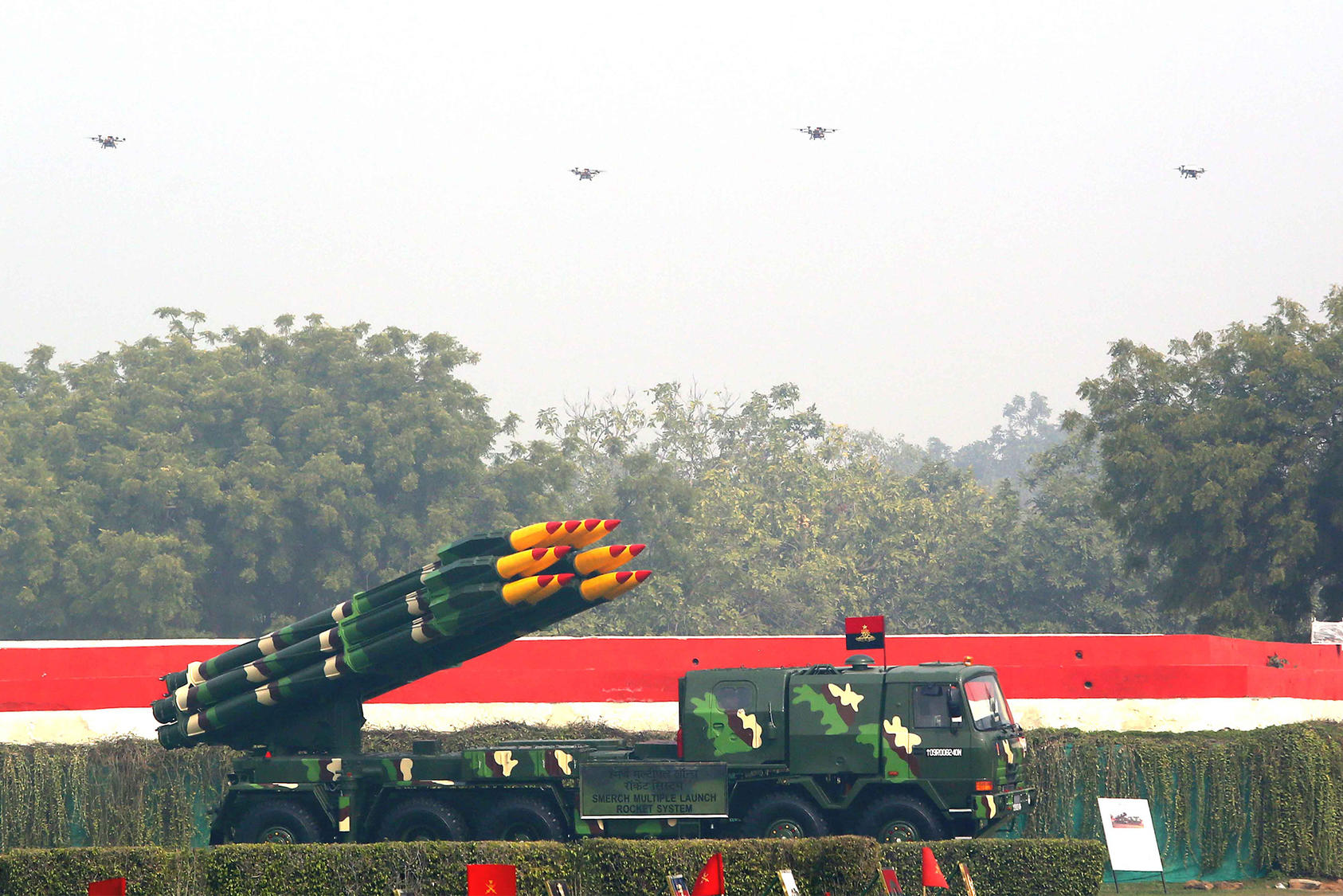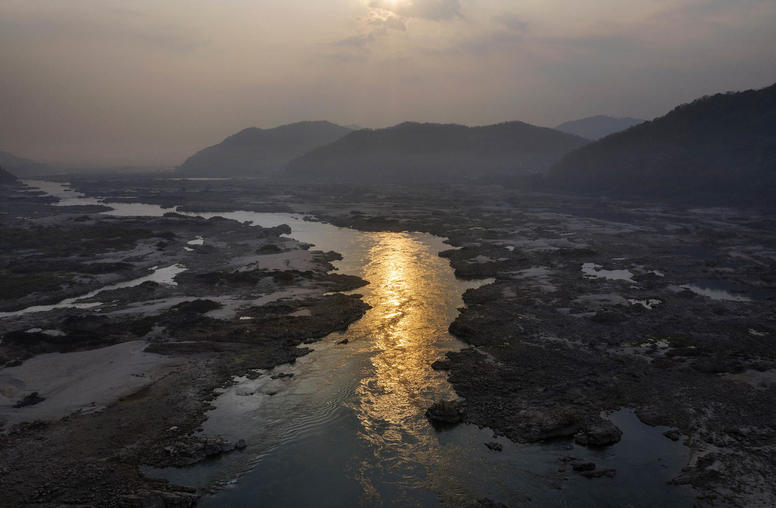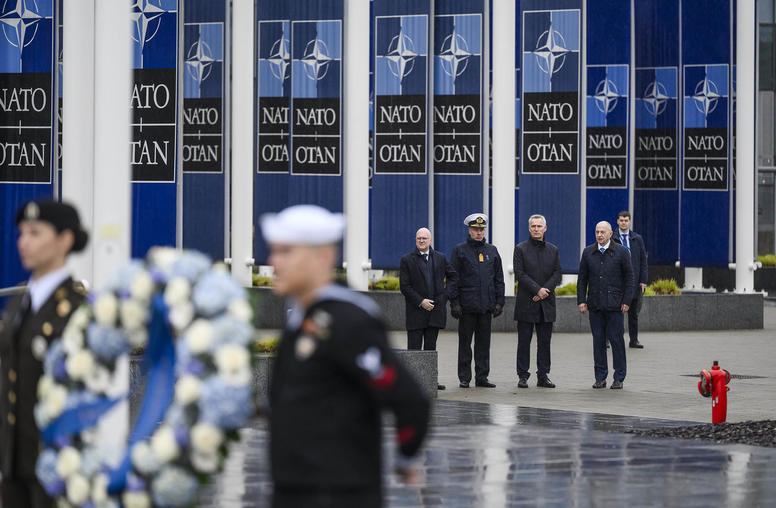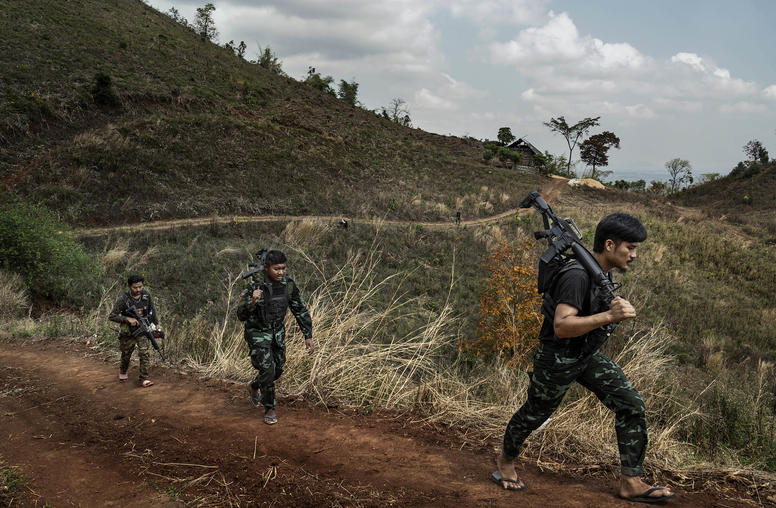Our Next ‘Unthinkable’ Crisis: Nuclear War in Asia?
U.S. policy should seek every chance to reduce risks among China, India, Pakistan.
Our world’s spate of disasters so recently unimaginable — European cities pulverized by war, Earth’s decaying climate or 6 million dead from pandemic disease — evokes a national security question: What other “unthinkable” crises must American citizens and policymakers anticipate? A singular threat is warfare around our planet’s one spot where three nuclear-armed states stubbornly contest long-unresolved border conflicts. Largely unnoted in national security news coverage, the conflicts embroiling China, India and Pakistan are growing more complex and dangerous. A USIP study shows the urgency for U.S. policymakers of working to reduce the risks.

Rising Risks for Nuclear Conflict
The British Empire’s withdrawal from the Indian subcontinent in 1947 left unresolved issues of statehood and borders — and the Himalayan frontiers of China, India and Pakistan have since formed a persistent, unhealed wound. The three nations have clashed in dozens of confrontations, from full-scale, conventional wars to Himalayan border skirmishes and armed standoffs, terrorist attacks or air strikes. India-Pakistan conflicts have escalated since Pakistani terrorists attacked Mumbai in 2008, killing or injuring hundreds of Indians. The India-China border conflict has flared since 2020, including its worst violence in 45 years.
The risks of sudden violence in the region were dramatized in March when India’s military accidentally launched an unarmed, supersonic missile 75 miles into Pakistan. Luckily, the missile’s crash killed no one, and it came in a moment of relative calm in the two countries’ volatile relations. Less noticed outside the region is China’s and India’s continued buildup of military infrastructure and capabilities along their disputed border, including a recent shift of Indian troops to to that zone.
While the rivalries, periodic clashes and armed capacity of the three nations have sharpened over 15 years, policies to protect strategic stability “didn’t really move along with the changes,” said Vikram Singh, an Asia security policy specialist at USIP. Fundamentally, “there is an absolute lack of strategic engagement among the three powers about how they would manage escalation,” and rising uncertainty about “how crises might spiral,” he said. “I think what we’ve seen in Russia and Ukraine gives us reason to think hard about the unthinkable.” Singh spoke at USIP alongside others among 19 Asia and nuclear security specialists who conducted the study, published this week. The report analyzes recent years’ evolution of the conflicts and offers recommendations for U.S. policymakers.
“We see an evolution, both in terms of the capabilities” of the rival states, notably “more and different types of weapons of technology,” and perhaps more importantly, in deteriorating relationships, “particularly between India and China, and India and Pakistan,” said Daniel Markey, a scholar and policy practitioner on South Asia and USIP advisor. These evolutions lead “to possibilities for even the potential of nuclear use in the region that are very worrisome,” he said.
Analysts from the USIP-convened Senior Study Group on Strategic Stability in Southern Asia discussed specific evolutions that are increasing the risks. One is that China is significantly expanding its nuclear arsenal, which is expected to reach “up to 700 deployed warheads within the next five years,” said Lynn Rusten, who leads efforts to reduce the dangers of nuclear weapons at the nonpartisan Nuclear Threat Initiative. Another problem is that the return to power of Afghanistan’s Taliban creates new space for violent extremist groups bent on attacking India through Pakistan. Such attacks have been a frequent trigger for India-Pakistan military clashes.
Southern Asia has gradually become a theater of rival alliances — between the United States and India on one hand and China and Pakistan on the other, a polarization that has been accelerated by the global strategic rivalry between China and the United States, noted Yun Sun, an expert on Chinese foreign policy at the Stimson Center. While both countries have sought to calm previous eruptions of violent conflict between India and Pakistan, the increasingly pronounced alignments of the United States and China now will make it more difficult for them to play a mediating role in future crises, Sun and other analysts said.
The ‘Ukraine Effect’
The study group expressed concern that China, India and Pakistan all underestimate the risks that a next flareup in any of their conflicts could escalate out of control, whether by miscalculation or accident, Singh said. “Across all three there is a level of comfort … that this isn’t going to be a major problem,” he said. Sun and Andrew Scobell, a specialist on Chinese foreign relations at USIP, echoed the concern, and Scobell said Beijing could deepen that false sense of comfort if the Ukraine war avoids a nuclear escalation following public alarm about that risk.
While some commentators have suggested that Russia’s setbacks in the Ukraine war will largely indicate caution to China over any military effort to seize control over Taiwan, study group members said it remains unclear what lessons China will absorb about the various conflicts along its periphery. “I’d be wary of thinking that they’re drawing the lessons … we hope they’re drawing,” said Scobell. “The Chinese conclusion is likely that they [Russia] didn’t prepare properly, and we’re going to prepare properly” for any strike on Taiwan, he said.
In southern Asia, the Ukraine conflict is likely to disadvantage India by weakening Russia as a reliable supplier of the vast majority of Indian weapons — from tanks to missiles to submarines, Singh and Sun said. Singh asked whether such a tilting of the military balance might help prompt Beijing to consider pushing “a little harder” in the countries’ border dispute — and what the response of an uncertain India might be.
Reducing the Risks
The recent changes in southern Asia’s conflicts pose serious new implications “for the potential onset of conflict and for the ability of the United States to manage any crises that may emerge from the region,” noted former assistant secretary of state George Moose, now USIP’s board chair, who led the discussion among the study group members. To improve that U.S. ability, the study offered three sets of recommendations:
- The United States should seek every opportunity to reduce the conflicts among India, China and Pakistan, even in small ways. Among other steps, it should work with partners worldwide to develop economic and financial tools to deter Chinese territorial aggression, and it should sharply press Pakistan and Afghanistan’s Taliban to crack down on violent groups targeting India.
- U.S. diplomacy should advance strategic stability in southern Asia by encouraging India and Pakistan to build a strong communications hotline that the countries’ leaderships can use to avoid misunderstandings and miscalculations amid crises. It should promote strategic stability talks between India and China, and among a new “N-7” group of nuclear powers: Britain, China, France, India, Pakistan, Russia and the United States. U.S. defense cooperation with India should strengthen its military deterrent capacities in ways that avoid worsening the region’s arms race.
- The United States should better prepare policymakers for the increasingly complex crises that may emerge from recent years’ changes in weapons technologies, regional politics and increased polarization. This would require more detailed planning for crisis response, and frequent scenario exercises to let U.S. officials practice responding to the disparate ways in which southern Asia crises could escalate into nuclear confrontations or war. U.S. agencies should prepare ways to share information publicly and with other governments to combat disinformation that heightens risks of conflict, and American diplomacy should work with third parties that could prepare for roles as intermediaries in future crises.



